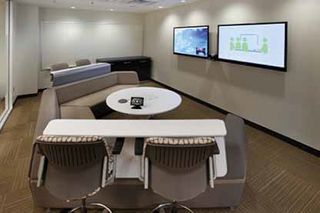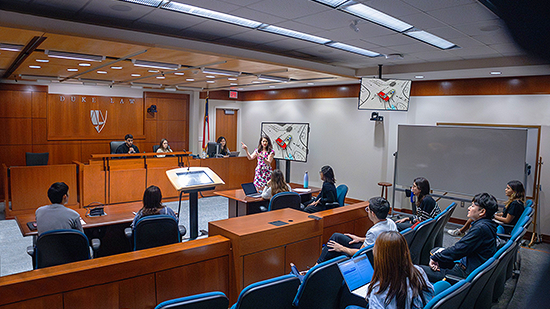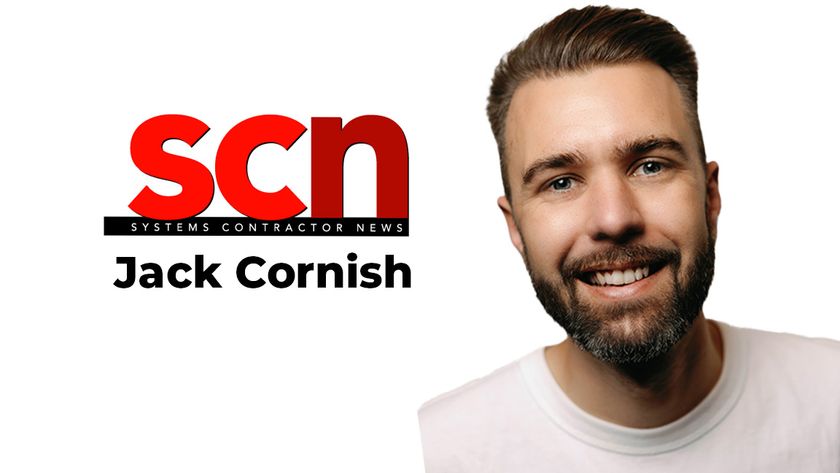
It goes without saying that 2012 ended with uncertainty in many arenas. From coast to coast and across the land, industry movers and shakers take a good hard look at what was most disappointing for integrators and what was an unanticipated sweet spot, all with an eye to 2013.
Thomas Berry, Jr. – CEO, Verrex Corporation – Mountainside, NJ

The latter half of 2012 was a time of transition for Verrex as downturns in the global economy and challenges related to global operations took its toll, Berry said. “Mirroring several of our own clients, we recognized we’d have to scale back in order to manage healthy growth. The changes we’ve made in 2012 have positioned us well for 2013. This includes a greater emphasis on our global allied network of integrators with the in-region expertise to make global execution practical. We expect to see a growth rate of 20 percent—up from 2012.”
These challenges are coupled with a very strong sense of renewed optimism not seen in a few years. “For example,” he added, “we are seeing an increase in technology companies expanding into the entire Northeast region where there is a tremendous appetite for conferencing and collaboration technologies. New opportunities coming from energy-efficient building mandates mean more positive signs for the market moving forward.”
These opportunities are wide-ranging, and as organizations realize they don’t need to be bound by location, vertical markets such as technology, oil, and education are moving into regions and neighborhoods they might not have considered before, Berry maintained. “Companies are also adapting more modern workplace strategies such as collaboration and working remotely, which is changing office layouts. We are seeing transitions from traditional workplace environments, those with cubes and individual offices, to open and multipurpose spaces.”
Unexpected challenges in the 2012 Northeast picture included those posed by Super Storm Sandy and the enormous amount of short and long-term damage it left behind. “On the positive side of the disaster, the outpouring of support from our clients, partners, and industry peers from around the globe was inspirational,” he acknowledged. “We see 2013 as an opportunity for significant growth. The Northeast will see a lot of rebuilding due to Sandy, including improved infrastructure. In addition, with the elections behind us there is more stability, and companies can focus on expansion and making technology decisions.”
Matthew Zaleski – Vice President, Data Projections – Houston, TX

The K-12 market saw less funding and a slowdown in growth in 2012, although there were bonds passed, Zaleski said. “Unfortunately, with no major growth, we wound up being flat last year; as expected, the lack of education funding didn’t help our projected growth rates.”
DP still is seeing opportunities in the corporate arena with oil and gas growing at a steady pace, as is the medical sector. “In videoconferencing and video streaming, sales continue to increase overall at a 30-40-percent rate,” he noted. “We’ve seen steady growth and anticipate that will continue to increase at a healthy rate.”
What surprised Zaleski is that DP’s services revenue continues to increase even though sales are not up. “This is a certainly a tie-in to our clients seeing the value-added benefits of what we bring to the table beyond the products and technology.”
For 2013, cloud services, managed services, and remote collaboration seem to be the natural transition of where integrators need to evolve, he said. “We are consistently evaluating what our customers are seeking and requesting and we feel as if these are areas that we really need to develop further as offerings.”
Richard L. Arthur – President, Ambassador Enterprises – Montvale, VA

2012 sales for Ambassador were flat, but with enough of a backlog, AE finished the year on a very good note. “We completed a large design/ build project that was a fouryear endeavor from design to completion,” Arthur said. “We also started a very large state hospital project that we will be finishing up this summer.”
Construction is still slow in the Southeast and the education market is still “pretty dead,” he noted. “We are going to those education clients with some new product offerings, and there’s interest, but not the money for them to do anything. Healthcare still seems to be the hot market for us.”
Healthcare, particularly asset tracking, seems to be getting a lot of attention. “Healthcare seems to be the new market for the higher-level tech type systems integration that we like to design and install,” Arthur said. “Helping to automate procedures and being able to provide reporting packages that meet JACO requirements are helping to move this area forward. I think we will continue to see increased opportunities in healthcare. We may see a bump in safety/security issue for the education market, but they will have to figure out how to fund projects with lower budgets.”
Sales will make a comeback and rebuild AE’s backlog of work this year, he noted. “I think our overall revenue will be about the same as in 2012, maybe three or four percent better. Our sales pipelines have a lot of very good activity in them, and several of the projects have been working long enough that we should start to see the orders this year.”
The surprise of 2012’s flat new sales proved a point, Arthur said. “It just shows that you have to keep a good balance of ‘quick work’ and the longerterm projects to keep you going.”
Jeff Emmons – President, Immedia Audio Visual Solutions – Scottsdale, AZ

The energy of the Southwest is reflected in a market that is coming back and coming back strong. “We had the second best year in the history of the company last year and we are anticipating that 2013 will break all of our previous records,” Emmons said. “Our backlog stretches into 2014 and it’s only January. We are serving as design consultants on several large projects that will be breaking ground this summer and complete next year, and this is the first time since 2008 that we have had this volume of new construction in the Southwest. We anticipate a 30-percent controlled growth rate in 2013. I am confident we could stretch to 50 percent, but we are going to hold back and save for the rainy day.”
Although he would like to see desktop and soft client videoconferencing as an emerging trend, client demand is low. “The tablet, primarily the iPad, continues to change the landscape of device control; it has overtaken the table-top touch panel as our clients’ preferred control interface,” he noted. “I think we are going to continue to find new creative ways to use the tablet, and we will start to see the Android tablet break into the market.”
Apple TV is something that has become a standard in nearly every conference, training, and boardroom we have designed in the last eight months, Emmons said. “I was surprised by Apple TV. We had a design meeting with a law firm in February of last year and they requested that we install Apple TV in all 22 of their conference rooms. That was the first time we had ever had that request. Since then, it has come up in nearly every client consultation. The idea of wirelessly sending video to a display is alluring, but we still require that every installation has hardwired connections.”

Immedia continues to see increasing demand from corporate clients, and company president Jeff Emmons has a strong sense that 2013 is going to feel reminiscent of the high point of the economy in late 2007 and early 2008. “There is a lot of pent-up demand and we are starting to see the ice melt on corporate budgets,” he said.An unexpected challenge came in the form of days outstanding on collections, which increased by 11 days last year, he explained. “We haven’t changed any policies or procedures to cause this, but it seems like the clients who have finally started spending money are trying to hold onto it a little more than they have in the past.”
Emmons has a strong sense that 2013 is going to feel reminiscent of the high point of the economy in late 2007 and early 2008. “There is a lot of pent-up demand and we are starting to see the ice melt on corporate budgets,” he said. “In 2012, we had the busiest December in the history of the company. The entire staff was working 60 hours a week to keep up. If this is any sign of what to expect in 2013, we will be in a position to turn away work. However, the economist that consults for us has predicted a slight recession in 2014, and his predictions have been spot-on for the last 20 years, so we are not planning to increase staff or make any significant investments this year.”
Jeff Stoebner – CEO, AVI Systems – Minneapolis, MN
2012 was a good year for AVI, with a revenue growth in excess of 20 percent.

“The state of the industry appears to be healthy in our region, and we predict a company growth rate of 10 to 20 percent,” Stoebner said. “Healthcare will grow in terms of technology consumption and enterprise telepresence also will grow.”
Last year saw an unexpected and unprecedented growth in video over Cat-5 solutions and an increase of larger-scale projects, he noted. “I believe we are in store for an increased growth in demand for AV and telepresence solutions. We will see an increase in large-scale projects in excess of $1M solutions, as well as an employment market in which we will have to develop our own talent as it won’t be readily available to us for the hire.”
Steve Olszewski – Vice President, Dimensional Communications – Mount Vernon, WA
Business at Dimensional was strong in 2012 but profitability was a challenge, Olszewski admitted. “Margins were lower due to less work and more companies going after jobs at reduced rates. We anticipated some of this, but were a bit surprised that our market and margins did not improve as much as we hoped.”

The business outlook is good in the Northwest, but there are challenges to keep an eye on, he said. “Both private and public sector markets seem to be improving, and some competitors in the AV space have either changed their approach to improve profitability or even gone out of business, allowing the firms still standing to start gaining more work at reasonable prices.”
The major regional corporates, such as Boeing, are doing more AV systems, and Dimensional is seeing a pent-up demand from customers who have held off on certain business investments. “Still,” Olszewski said, “we are very cautious, due to uncertainties that still remain in the political and government environments. We want to return to a solid 10- to 15-percent annual growth rate but a lot of that goal is based on the economic recovery in the U.S. I think it all depends on Federal Government decisions, choices, and messaging in the next few months and the perception of that messaging by business and consumers.”
Vertical markets and technologies that may spur regional growth in 2013 include corporate, small business, healthcare, and education. “Touchpad integration and mobility are big with customers, as is hosting of key data-centric services through virtualization,” he noted. “We have created a new technology division, focused on small business computing and telephony cloud services. The breakdown of hardware into virtualized systems is a big area of opportunity.”
Olszewski was pleasantly surprised that the educational sector spending stayed strong in 2012 even as governments and districts struggled with financial downturns. “Some of these projects were funded in previous years, so 2013 may reflect that lag. We are optimistic that cost-saving and more refined systems will make a business case for investment by the education sector.”
Margin Builder
- “If organizations are still waffling on investment due to uncertainty on taxes, the debt ceiling, and other growthdetermining issues, the economy will suffer. We need a bright light, some good news, or major innovation, something that sends a message to the U.S. and the world that business is good in one of the world’s largest economies.”
- – Steve Olszewski, Dimensional Communications
Karen Mitchell is a freelance writer based in Boulder, CO.













